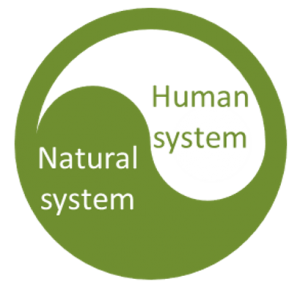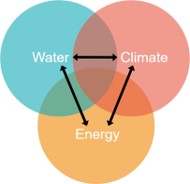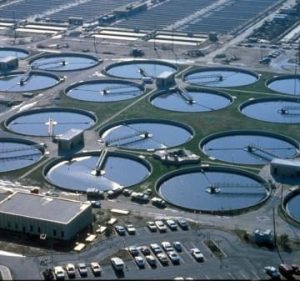Research Goal
 The vision that drives our research is a world where the needs of present and future generations are being met in a way that humans thrive while conserving the planet’s life support systems. In the past, resources that support life such as energy, food, and water have been exploited, managed, and regulated independently, and without significant acknowledgement of the scale of impacts on natural systems. Over time we have realized that the conventional approach to manage resources is unsustainable in a world with rapid population growth and urbanization, aging engineered systems, threats of climate change, and lack of sustainable financial resources.
The vision that drives our research is a world where the needs of present and future generations are being met in a way that humans thrive while conserving the planet’s life support systems. In the past, resources that support life such as energy, food, and water have been exploited, managed, and regulated independently, and without significant acknowledgement of the scale of impacts on natural systems. Over time we have realized that the conventional approach to manage resources is unsustainable in a world with rapid population growth and urbanization, aging engineered systems, threats of climate change, and lack of sustainable financial resources.
My research group seeks to address daunting questions at interface of water, energy, climate, and food systems with a collection of physical, statistical, and geospatial modeling tools that characterize the interactions between human and natural systems, assist long-term strategic resource planning, and resolve critical conflicts at the heart of the nexus.
Focus Areas
a. Water and energy systems interactions and adaptations to climate change

Water and energy systems are interconnected, interdependent, and intertwined. The two systems are connected through important physical processes. For example, over 1/3 of the freshwater is used to produce electricity in the United States. About 2% of the total primary energy consumption in the US is used for water treatment, purification, delivery, and conveyance. Because of the interconnections and interdependencies between the two systems, constraints posed on one system will propagate to the other system. For example, in early 2021, a historic winter storm in Texas caused widespread rolling blackouts for several days. Power outages led to pump failures and prevented proper water treatment, which exacerbated the water problems caused by bursting pipes due to cold weather. Therefore, the state’s power outage disaster transitioned into a water crisis. Furthermore, the interconnected water-energy system is becoming more vulnerable under combined global environmental change (e.g., climate change) and socioeconomic drivers (e.g., urbanization, population growth, etc.).
We aim to advance our understanding of the water-energy-climate nexus by analyzing the interdependencies and tradeoffs between systems with quantitative modeling approach. We strive to find technology-enabled solutions to resolve some critical conflicts at the water-energy-climate nexus, with the objective to inform sustainable water and energy system planning.
b. Urban water system sustainability and resiliency

Water supply and wastewater treatment systems are critical infrastructure that directly impact public health and economic development. Urban water system in the US face a lot of challenges like increasing water demand, aging infrastructure, intensified competition for water use, and climate change. For example, it is estimated that nearly 6 billion gallons of treated water in the US, 15% of the nation’s daily public water supply, is lost every day due to pipe leaks. Such loss is as high as 30% in aging and economically constrained systems, including several in and around Chicago, Illinois. Severe weathers also exacerbates the deterioration of urban water infrastructure. The historic cold snap in Texas in 2021 led to state-wide frozen and burst water pipes, causing a peak of 14.9 million people impacted by water outages. The scale, severity, and technical and operational complexity of these daunting challenges require unconventional solutions to promote more sustainable management of urban water infrastructure.
We aim to guide the planning and design of sustainable and resilient urban water system by integrating quantitative modeling with experimental analysis. Our research contributes to the ongoing discussion around integrated water and wastewater management via decentralization to secure safe water supply.
c. Innovative solutions in the water sector

Although water reuse is increasingly emphasized as an essential response to a growing range of water stressors in the United States, reused water still accounts for less than 1% of the nation’s total water use. Impediments to water reuse include public acceptance, complex systems of water rights, and regulatory, financial, technical, and institutional barriers. Adequate understanding of the impacts (e.g., benefits, costs, and risks) of water reuse on the community’s water resource portfolio is a prerequisite to overcoming these impediments, and bridging the information gap regarding cost and benefit of water reuse will motivate communities to consider more than economic costs. The missing component limits decision makers’ ability to think beyond traditional economic consideration and neglects the perceived worth of alternative water supply options that have non-traditional benefits.
We aim to help communities improve water security by diversifying their water supply through water reuse. We integrate environmental economic evaluation approaches with traditional water resources management to develop cost-effective, environmentally positive, and socially beneficial water portfolios to address the range of challenges faced in contemporary water resources management.